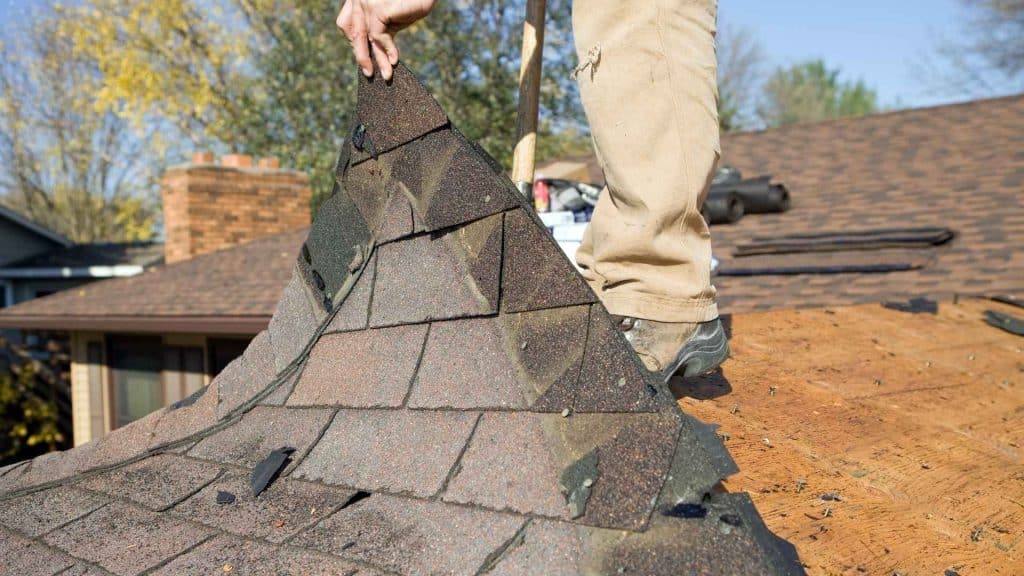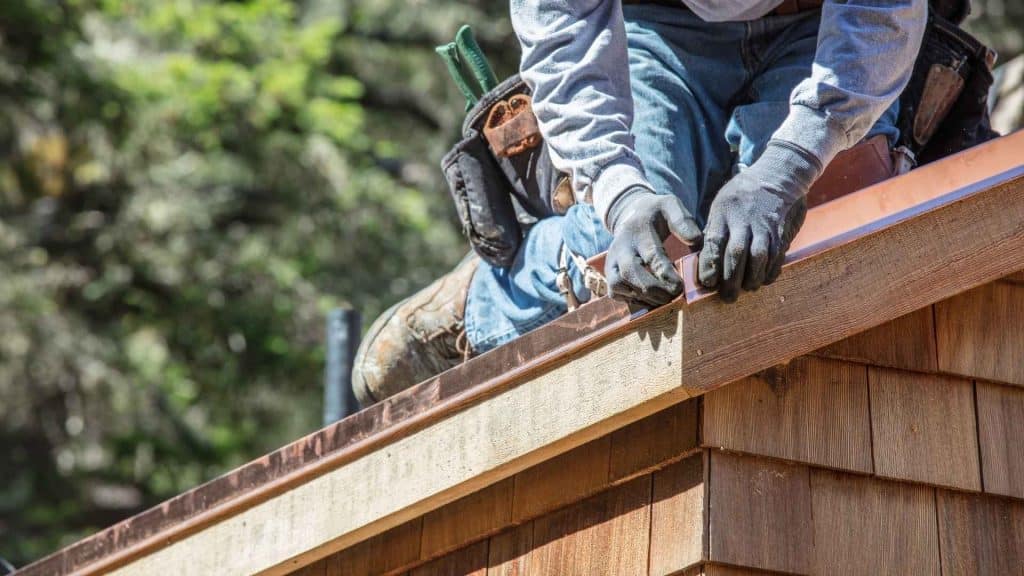A roof leak can be sneaky. Water doesn’t always drip from the exact spot it enters; it can travel along rafters, around insulation, and across ceilings before it shows up as a stain. The upside is that most leaks come from a short list of predictable trouble spots. Understanding those causes—and how professionals diagnose and repair them—helps you act quickly, avoid guesswork, and protect your home for the long term.
What a Leak Looks Like
Recognizing Early Signs Saves Time And Money:
- Brown ceiling rings, bubbling paint, or peeling drywall after rain
- Musty odors in the attic or upper rooms
- Drips or stains that appear only during wind‑driven storms
- Granules in gutters or shingle fragments in the yard
- Dark streaks on exterior walls below roof‑to‑wall intersections
- Daylight is visible through the roof deck in the attic
If you notice any of these, schedule a professional evaluation promptly.
Common Causes of Roof Leaks
- Aged or damaged shingles:brittle, curled, or missing shingles expose nail lines and underlayment.
- Flashing errors:poorly layered step flashing, surface‑caulked chimney counterflashing, or missing kickout flashing at wall bottoms.
- Valley problems: debris dams or improperly formed valleys push water sideways beneath shingles.
- Penetrations:cracked pipe boots, loose vent collars, or deteriorated skylight seals.
- Ice dams: melt‑refreeze cycles force water under shingles along eaves.
- Clogged gutters:overflow wets fascia and can send water behind siding.
- Poor ventilation:trapped heat and moisture shorten shingle life and promote condensation.
- Improper nailing:high nails or over‑driven nails create tiny pathways for water.
- Complex roof geometry:dead valleys and multiple planes concentrate runoff in vulnerable areas.
How Professionals Diagnose Leaks
Pros do not guess—they follow the water:
- History and patterns:when did it start, which storms trigger it, and where do stains first appear?
- Exterior survey: shingle condition, nail placement, flashing overlaps, and water pathways from ridge to gutter.
- Attic inspection:damp insulation, darkened sheathing, rusted fasteners, and airflow patterns that reveal travel routes.
- Tools and tests: moisture meters, thermal imaging, and controlled hose testing to confirm the entry point.
- Documentation: photos and notes that connect cause and effect and support clear repair options.
How Pros Fix The Most Common Leaks
- Damaged shingles:replace individual shingles, correct nailing, and seal exposed fasteners with compatible products.
- Step flashing mistakes: remove siding as needed, re‑weave individual step pieces with each shingle course, and add a formed kickout at the gutter.
- Chimney leaks:install base flashing and reglet‑cut counterflashing set into mortar joints, then seal with compatible materials.
- Valley issues:clear debris, upgrade underlayment with self‑adhered membrane, and install correctly sized valley metal or properly detailed shingle valleys.
- Pipe boot failures: replace cracked collars, integrate the boot base beneath shingles, and seal per manufacturer specifications.
- Skylight seepage: use a matched flashing kit, verify curb height and slope, and ensure surrounding shingles shed water correctly.
- Ice dams:add eave‑edge membrane, improve attic insulation and air sealing, and balance soffit intake with ridge exhaust.
- Gutter‑related intrusion:re‑hang for proper pitch, clear blockages, and install kickouts at roof‑to‑wall terminations.
- Ventilation deficits:add intake and exhaust, install baffles to keep soffits clear, and reduce attic humidity that can mimic leaks.
What You Can Do Right Now
- Protect interiors: move belongings, place a bucket, and carefully relieve bulging ceiling water with a small, controlled puncture.
- Document evidence:photograph stains and note storm conditions to aid diagnosis and any insurance conversations.
- Stay off the roof:wet roofing is dangerous; leave inspection and repair to trained professionals.
Prevention and Maintenance That Work
- Routine inspections: seasonal or annual checkups catch small flashing gaps, cracked boots, and lifted shingles before big storms expose them.
- Keep water paths clear: clean gutters and valleys so runoff stays in its lane.
- Trim overhanging branches: reduce debris buildup and abrasion on shingles and metalwork.
- Balance ventilation: adequate soffit intake and ridge exhaust extend shingle life and limit ice dams.
- After major storms:do a ground‑level scan or schedule a quick professional look, especially if you spot shingle fragments or granules.
Repair Or Replace?
Not every leak means you need a new roof. If the system is relatively young and the problem is isolated—like a cracked boot or a short run of faulty step flashing—a targeted repair is appropriate. If leaks recur in multiple areas, shingles are brittle across large sections, or the deck shows soft spots, replacement may be the safer long‑term solution. A clear, evidence‑based assessment weighing age, scope, and risk helps you invest wisely and avoid repeated service calls.
General Examples
- Wind‑lifted shingles:after a blustery storm, a homeowner noticed a ceiling ring near a ridge. Several shingles had lifted and exposed nail heads. Replacing the affected shingles and sealing fasteners resolved the leak.
- Roof‑to‑wall intersection: stains appeared on an interior wall below a second‑story sidewall. The installer had used continuous wall flashing and skipped the kickout. Installing step flashing, counterflashing, and a formed kickout redirected water into the gutter.
- Pipe boot drip: a faint, musty odor followed heavy rain. The rubber collar at a plumbing vent had cracked from sun exposure. A new boot, woven into the shingle courses, stopped the problem.
- Valley backup: leaves and needles created a dam in a roof valley, forcing water sideways. Clearing debris and extending self‑adhered membrane beneath the valley prevented future intrusion.
- Ice‑dam intrusion:after a deep freeze, water stained the ceiling along outside walls. The fix combined eave‑edge membrane, added soffit intake, air sealing around ceiling penetrations, and balanced ridge exhaust.
A Simple, Helpful Conclusion
Roof leaks are solvable when you identify the true entry point and correct the underlying detail—not just the symptom. Acting early and relying on a methodical inspection prevents guesswork, protects your home, and often keeps costs down. Focus on causes like flashing details, valleys, penetrations, and ventilation, and you will avoid repeat issues.
If you want that careful, system-level approach, Grace Family Roofing is ready to help. Our team evaluates the entire roof assembly, documents findings with photos, and explains options in plain language—from targeted repairs to broader updates designed to prevent a second leak. If you are seeing stains, musty odors, or a suspicious drip, schedule a visit. We will assess, explain, and repair with care so your home stays dry and protected.



